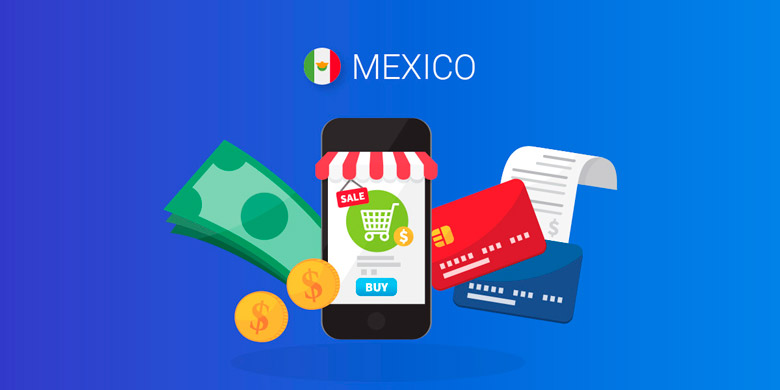
Mexico has seen an unexpected growth in its online sales during the lockdown due to the COVID-19 pandemic: eCommerce sales increased more than 40%.
According to AMVO, Mexico‘s association of online sales, pantry and groceries online sales register increases of up to 300%, traditional categories, multi-category and electronics for instance, reach a growth between 15% and 60%.
Laying the Groundwork
Latin America’s second-largest market for eCommerce has only begun to realize its full potential. Growing at 17% annually, it is positioned to shrink its market distance from Brazil, attaining $48 billion in annual online spend by 2021.
Mexico’s eCommerce market enjoys unique advantages. Its eCommerce got the first start with global companies taking pointers from their US-based headquarters, including Walmart, Sam’s Club, and Home Depot. With a high proportion of 18-40 year olds, more than 80% living in large cities and a 85% smartphone penetration, Mexico’s demographics highly favor rapid and widespread eCommerce adoption. This population is online, plugged-in and ready to consume.
Mexico’s eCommerce market enjoys unique advantages. Its eCommerce got the first start with global companies taking pointers from their US-based headquarters, including Walmart, Sam’s Club, and Home Depot. With a high proportion of 18-40 year olds, more than 80% living in large cities and a 85% smartphone penetration, Mexico’s demographics highly favor rapid and widespread eCommerce adoption. This population is online, plugged-in and ready to consume.
Mexico’s New FinTech Law
Mexico, a fertile ground for FinTech companies and where FinTech websites and apps have become widespread, has recently established a new FinTech Law. Among other rules, this Law creates a sandbox regime for FinTech startups of up to two years that allows them to operate under a temporary license without having to comply with all of the regulatory requirements at once. The law also considers impulsing more micro-loans services. The increase in credits and loans in addition to installments, are expected to positively impact the online consumption levels, limited today by the lack of credit options.
Banks are Passé
The 129M people population is not a banked one. With 63% of People unbanked, it’s no surprise that Credit Card penetration stands at less than 10%.
According to research done by Tufts University, in the past 15 years, nearly 90% of consumer transactions are still being paid with cash. If you were planning on accepting payments only in the form of international credit cards and bank transfers – you are not going to get a big part of the eCommerce pie.
Fraud is also a serious problem, and stands today at an estimated 2% (compared to <0.5% in the US). Many credit card-wielding Mexicans hesitate to use their cards online; fraud is rampant and the chargeback process is grueling. Disputing a charge requires manually filing paperwork, obtaining signatures, producing invoices and hours of standing in line in addition to an overall feeling of being hoodwinked. For many, shopping online is simply not worth the risk, unless the online retailer has taken the time to build trust. Partnering with local payment providers and offering local customer support is a must in order to win the eCommerce race in Mexico.
Cash is King
Cash plays a fundamental role in Mexican eCommerce, dominated by the convenience store chain Oxxo. With its product OxxoPay, consumers print out a payment voucher or receive it on their mobile device, making payments at any of Oxxo’s 17,000 retail locations. This—as well as other cash payment providers including 7-Eleven and several pharmacies— represent 20% of the pie or about $3 billion in volume. Mexicans are highly used to paying with Oxxo through convenience stores, widely spread in Mexico.
To gain the trust of your Mexican shoppers, it is strongly recommended to customize your Oxxo voucher to be mobile friendly and match your UI. Make sure you also confirm the payment reception as fast as possible. These together will help you boost your user Lifetime Value and increase the likelihood of further purchases by the user.
Buy Now, Pay Later
With 40 to 50% of online buyers using installments, it’s something you don’t want to miss out on. Installments are used for everything- from clothes and appliances to groceries and restaurant meals.
Why are Installments so popular? Inflation is often higher than the installments interest rate, making installments especially enticing to shoppers. And while they’re at it, shoppers that pay with installments often have an average purchase 30 to 40% higher than those without them.
The Bottom Line
Mexico is an emerging market with promising potential. When working towards expanding to this market, remember that cash dominates the region and installments play an essential part in the success of a business. Make sure you have a local payments service provider helping you tap-into this huge market that’s using alternative payment methods.
Source: FXC Intelligence
Mexico - Have you missed the opportunity?
Mexico is a top 15 global trading economy but to date has been mostly absent from the FinTech scene. At the consumer level, 44% of adults are still unbanked and it is the third-largest recipient of remittances ($36bn/yr), primarily from the US.
Ecommerce is one of the fastest-growing segments and over 67% percent of Mexican online shoppers purchase cross-border, with three quarters buying from the US.
Mexico is beginning to pick up traction. Last Thursday, the Mexican Banking and Securities Commission announced that since it adopted the FinTech Law back in March 2018, it has received FinTech applications from 85 companies. 60 applied to operate as electronic payment processors and 25 as collective financing companies.
As a further indicator of change, Santander just invested $57.5m – the biggest FinTech investment in Mexico to date – in Klar, a debit and credit alternative.